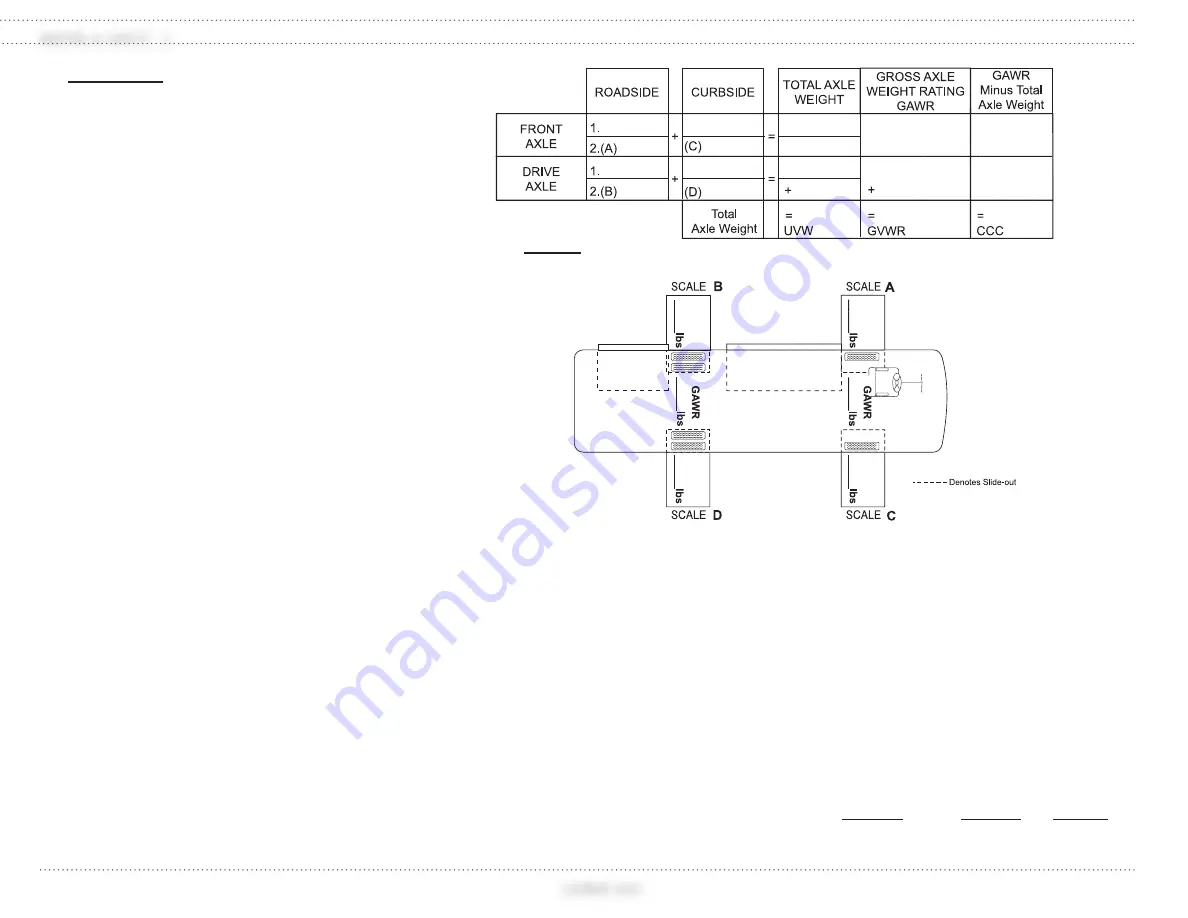
DRIVING & SAFETY - 2
CAYMAN 2007
40
CAUTION:
If actual weight carried by any tire is
below the tire chart weight specification
minimum tire pressure the minimum
inflation pressure must be maintained.
Tire pressure below the minimum
inflation pressure can overheat and
damage the tire casing leading to
premature tire failure or blowout.
Load and Infl ation Tables:
The Load and Infl ation Table will help
determine correct infl ation for the motorhome
tires after properly weighing the motorhome. All
pressures are rated at a cold PSI. Cold conditions
are defi ned as early in the morning before the
day’s ambient temperature, sun’s radiant heat or
the heat generated while driving have caused the
tire pressure to temporarily increase. This means
that the pressure should be checked early and
when the motorhome has not been driven more
than one mile. The check interval should be in
the morning, before the “drive” trip and every
morning on extended trips. A quality truck tire
gauge with a multiple angle airhead is needed
to ensure access to both dual wheel positions of
the drive axle. Ensure the valve cap is replaced
on the stem after the infl ation is checked. This
guarantees the valve core will remain free of dirt
and foreign material. Material lodged between
the valve core and internal stem can cause slow
leaks resulting in tire failure.
Cargo Carrying Capacity:
When weighing the motorhome it is important
to understand that each motorhome, even of
the same model year, fl oorplan and length will
weigh different due to options and accessories.
The
Gross Vehicle Weight Rating
(
GVWR
),
Gross Combination Weight Rating
(GCWR)
and/or Gross Axle Weight Rating
(GAWR)
must
not be exceeded.
GVWR
of the vehicle limits the weight of the
entire load combination, regardless of the water,
LP-Gas, passengers and cargo weight.
It is important to understand that the weighing
process is performed in two phases. First, by
determining the
Cargo Carrying Capacity
(CCC)
; and second, to ensure the
GVWR
is
not exceeded when adjusting tire pressures. The
weighing process should start by recording the
GVWR
from the Federal Weight Label, then
weighing the motorhome unloaded, without
passengers and with a full fuel tank. Engine and
transmission fl uid levels must be full. This is
known as the Unloaded Vehicle Weight (
UVW
).
Once this weight has been recorded it can be
subtracted from the
GVWR
.
gVWr 35,000 - UVW 20,000 = a 15,000
020255k
6,500
5000
10,000
7,100
6,500
10,000
4,000
6,900
13,000
20,000
9,000
14,000
23,000
13,000
20,000
33,000
4,000
6,000
10,000
NOTE:
These measurements are with a full fuel tank and nobody in the motorhome.
Summary of Contents for CAYMAN 2007
Page 12: ...GENERAL INFORMATION 1 CAYMAN 2007 8 NOTES...
Page 14: ......
Page 16: ......
Page 52: ...DRIVING SAFETY 2 CAYMAN 2007 48 NOTES...
Page 80: ...EXTERIOR INTERIOR CARE 3 CAYMAN 2007 76 NOTES...
Page 100: ...APPLIANCES 4 CAYMAN 2007 96 NOTES...
Page 132: ...WATER SYSTEMS 6 CAYMAN 2007 128 NOTES...
Page 160: ...ELECTRICAL SYSTEMS HOUSE 8 156 CAYMAN 2007 NOTES...
Page 226: ...INDEX 222 CAYMAN 2007 NOTES...





































